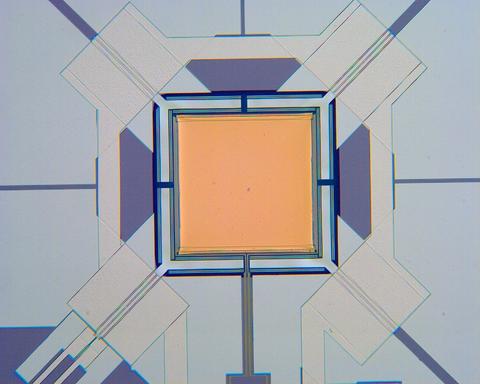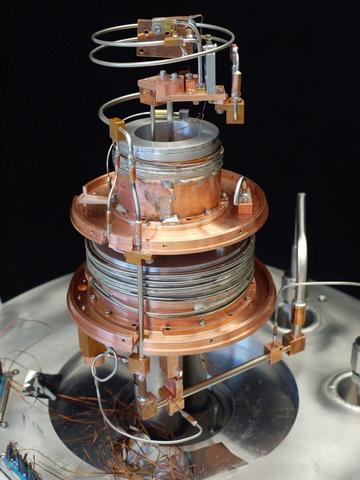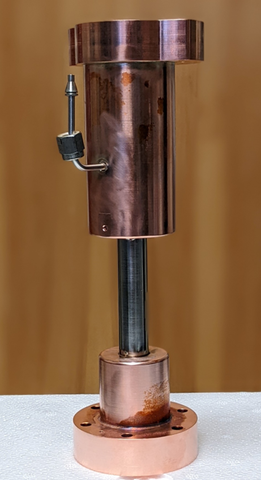Summary
Low temperatures suppress noise and make quantum phenomena accessible. As a result, cryogenics play a crucial role in precision measurements.
Description

Micrograph showing thin-film payload (orange) cooled by four pairs of tunnel junctions located at each corner of the payload.
Almost all the devices developed by the Quantum Sensors Group work at temperatures below liquid helium. Sometimes, it is necessary to develop specialized cryogenics to test the devices, or to facilitate their dissemination to outside users.
The cryogenics team also aims to make refrigerators more accessible to cryogenic users through fundamental studies. For example, we are interested in the research and development of small and efficient compressors, methods for the rapid cooldown of cryostats, and the optimal utilization of available cooling power.
Major Accomplishments
- 1990s: Development and commercialization of two-stage adiabatic demagnetization refrigerators precooled by liquid nitrogen and helium. These refrigerators played an important role in the development of TES detectors.
- 2000s: Development and commercialization of two-stage adiabatic demagnetization refrigerators precooled by pulse tube refrigerators. These refrigerators are now widely used outside NIST.
- 2010s: Development and commercialization of single-stage adiabatic demagnetization refrigerators precooled by helium-3 sorption units and pulse tube refrigerators.
- 2010s: Development of on-chip, solid-state refrigerators based on quantum tunneling through Normal-Insulator-Superconductor (NIS) tunnel junctions.
- 2010s: Development of a compact, extremely low power cryocooler capable of reaching temperatures below 2 K based on a three-stage pulse tube and a helium-4 Joule-Thomson loop.
- 2020s: Robust study on power flows in the regenerators of pulse tube refrigerators; this study explains how real-fluid effects are responsible for the large amount of cooling available from 4 K regenerators.
- 2020s: Development of acoustic techniques for the rapid cooldown of pulse tube refrigerators and cryostats.



